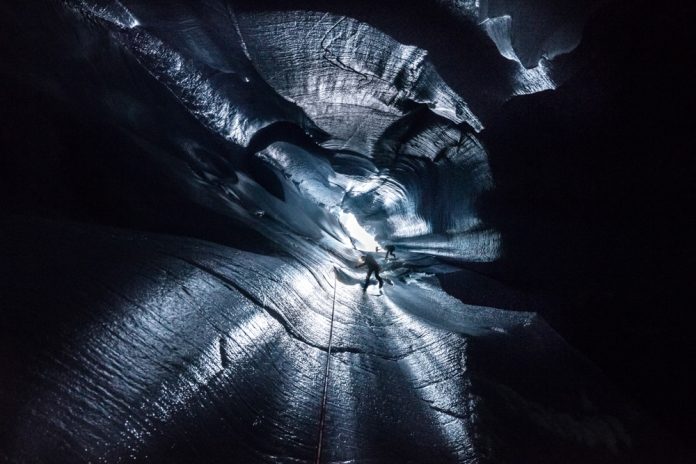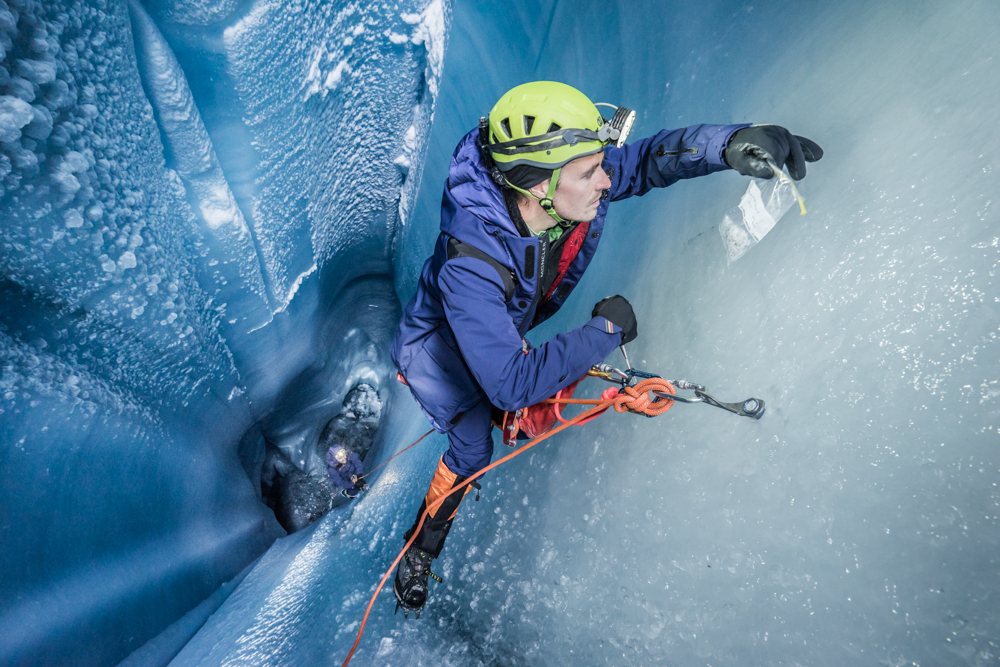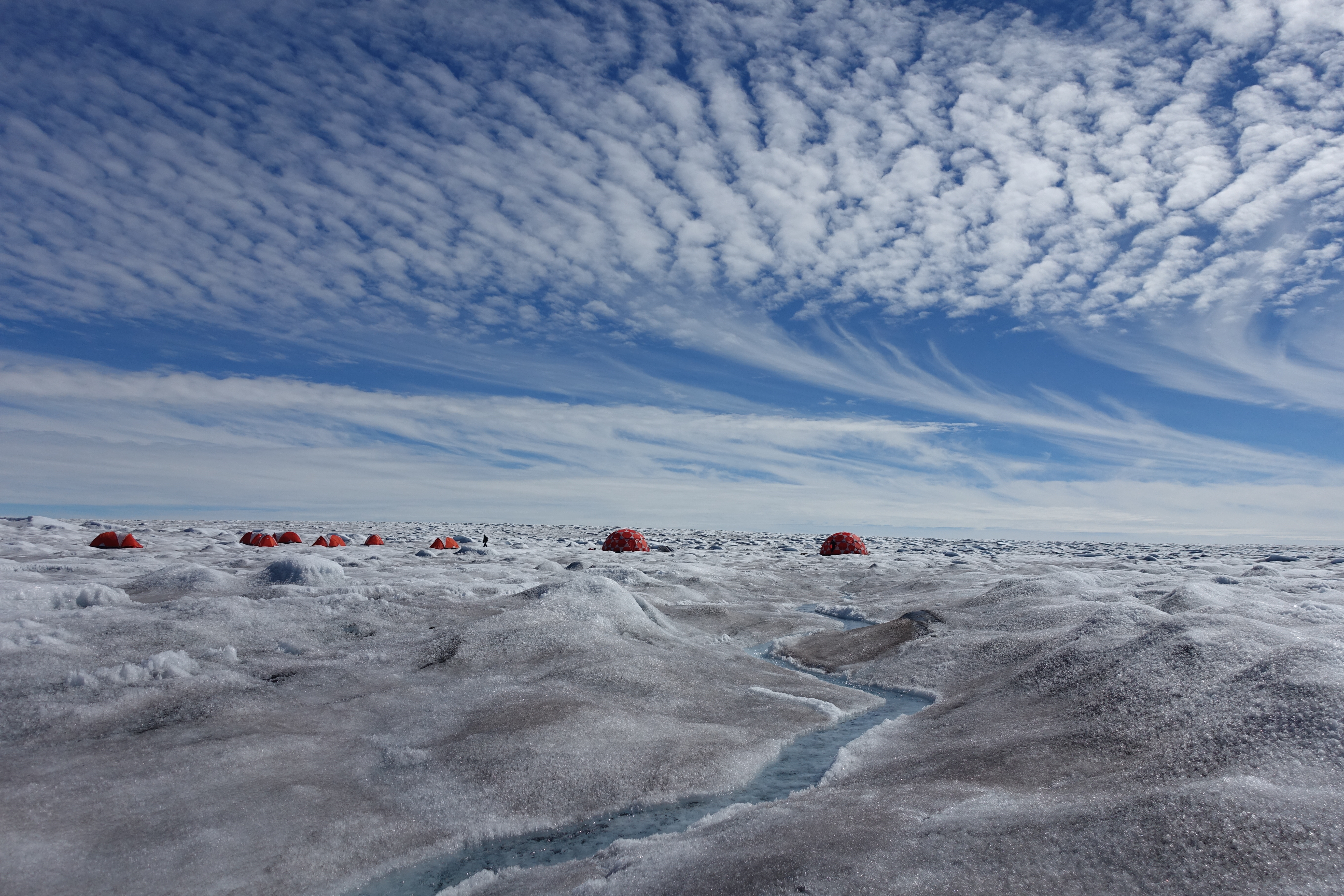
Cook, J., Dayal, A., Young, T. J., from the UK Polar Network (UKPN) Committee explore the wonders of Arctic science and how this applies to the past, present and future
Human activities are warming the planet, with the Arctic heating twice as fast as the global average (1). As well as posing an existential threat to Arctic ecosystems, environmental changes there have immediate effects at lower latitudes, including modifying weather, rising sea levels and changing the distributions of plant and animals.
Crucially, environmental change in the Arctic can have a multiplying effect on global temperature changes, making human-induced warming a self-accelerating process. Arctic ice is a cold-store for information about Earth’s deep history – studying it allows us to learn from the past, be receptive to warning signs in the present and use this knowledge to predict Arctic change into the future.
The past
The Arctic ice is a vast frozen repository for information about the Earth’s climate. The Greenland Ice Sheet is the largest continuous mass of ice in the Arctic and by far the thickest (up to 3 km at its thickest point). Vertical sections can be removed through various coring techniques, providing access to ice that formed hundreds of thousands of years ago. Like tree rings, layers in the ice are a proxy for age, with one layer representing one year’s growth. Gases trapped in these layers help to determine what the temperature and atmospheric conditions were like when the ice formed.
The ice also contains particles that pin dates to particular ice layers, for example, dust from specific volcanic eruptions. The complete stack of layers then provides a continuous dataset of climatic changes stretching back many millennia, enabling scientists to determine, for example, temperatures during periods of high greenhouse gas emissions in the past as well as potential lags in the system, helping to predict the effects of human greenhouse gas emissions today. Ice sheets are unique and vital ice museums storing information that would otherwise be lost. The same is true for mountain glaciers and ice caps that may well disappear irretrievably in the next few decades. Reconstructing past climatic changes from ice sheets in the Arctic is therefore both urgent and important.

The present
We are living through a period of unprecedented anthropogenic climatic change. The Arctic is currently warming at twice the rate of the global average, largely due to reflectivity feedbacks (melting ice becomes less reflective and absorbs the sun’s energy with increasing efficiency, therefore melting faster in a self-accelerating feedback loop) and can be quantified by coupling measurements made by scientists on the ice with satellite data. On Greenland alone, an estimated 270 gigatons of ice melt each year. These feedbacks are operating now, and they can be quantified by coupling measurements made by scientists on the ice with satellite data.
A well-known maxim states that “what happens in the Arctic doesn’t stay in the Arctic”. Shrinking land and sea ice alter global atmospheric and oceanic circulation patterns and can affect the weather at lower latitudes (2). This has contributed to extreme weather in the United States and Northern Europe in recent years. To predict and manage floods, droughts, storms, heat waves and cold snaps in the world’s most heavily populated cities, real-time monitoring is required which necessitates high-quality on-ice measurements and continued international engagement in satellite Earth observation.
Studying the Arctic now is necessary because present-day Arctic change is impacting human populations, infrastructure and economies in the present, and will continue to do so increasingly over time.

The future
Melting land-ice in the Arctic is increasingly adding to global sea level rise, raising water tables and accelerating coastal erosion. Combined with increased storminess, this will threaten even more communities and their infrastructures. The reflectivity feedback that enables Earth to absorb more solar energy is self-amplifying and will continue to exacerbate climate change. Robust connections between fluctuating Arctic ice cover and the shape of the jet stream may well promote more frequent and prolonged extreme weather at lower latitudes, endangering human lives and livelihoods directly and also placing increased strain on the Earth’s resources and raising political and socio-economic tensions. The warming Arctic also invites new plants, animals and diseases northwards, disturbing the fragile indigenous ecosystems. These are destabilising influences on the Earth system and human society that will exacerbate in the future.
Our ability to manage the future rests upon our ability to pre-empt it. Refining our predictions of future global climate change will rely heavily upon our ability to predict changes in the Earth’s most sensitive region – the Arctic. Arctic science should, therefore, be a global priority. While aiming to protect humanity from the threat of climate change is justification enough for supporting Arctic science, there is also a significant economic opportunity space incorporating clean energy, ecotourism, bioprospecting, conservation and geoengineering. Arctic scientists are therefore well positioned to guide the responsible leveraging of new opportunities arising as side effects of environmental change in the future.
Outlook
The Arctic offers a unique opportunity for increasing collaborative links between scientists, science communicators, policymakers, diplomats and businesses. Innovative new technologies, international collaborations and interdisciplinary research can improve our ability to forecast and manage future climate and global ecological change with broad social, environmental and economic benefits. Equally, communicating established and cutting-edge Arctic science to the public is essential to raise environmental awareness and to ensure return-on-investment for taxpayer-funded science. Ultimately, the future of the Arctic depends upon our ability to learn from the past and act in the present.
UKPN is a UK-based early career polar scientist network, a national committee of the Association of Polar Early Career Scientists (APECS). Our aim is to educate, inspire and influence others in relation to polar science. For more information see polarnetwork.org.
- Overland, J.E., Hanna, E., Hanssen-Bauer, I., Kim, S-J., Walsh, J.E., Wang, M., Bhatt, U.S., Thoman, R.L. Surface Air Temperature, in NOAA Arctic Report Card 2017, http://arctic.noaa.gov/Report-Card/Report-Card-2017.
- Francis, J.A., Vavrus, S.J. 2015. Evidence for a wavier jet stream in response to rapid Arctic warming. Environmental Research Letters, 10 (1): 014005.
Joseph Cook
Postdoctoral Researcher, University of Sheffield, UK
Member of the UK Polar Network (UKPN) Committee
www.twitter.com/tothepoles?lang=en
Archana Dayal
PhD Student, University of Sheffield, UK
Member of the UK Polar Network (UKPN) Committee
T.J. Young
Postdoctoral Researcher, University of Cambridge, UK
Member of the UK Polar Network (UKPN) Committee










